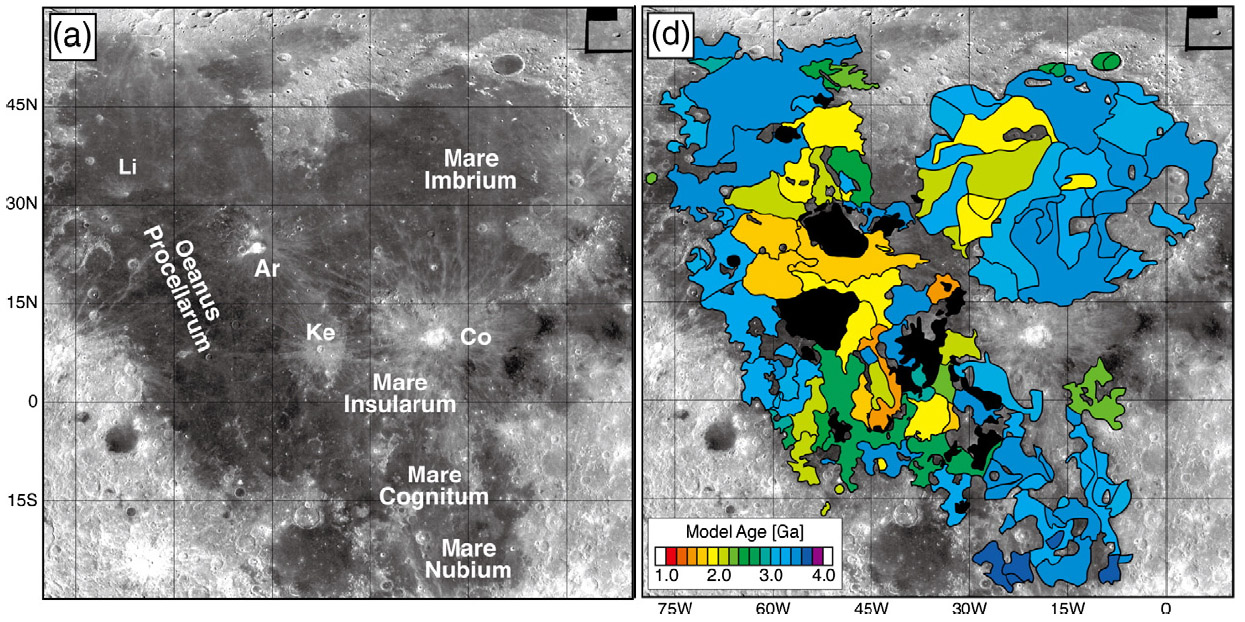June 29, 2011
New Ages for Old Rocks

maps from Tomokatsu Morota and others, 2011
Counting craters is a mundane (and boring) task that nonetheless results in information that is critical for
understanding lunar history. The older a lunar surface is the longer it has been recording impact cratering
events. So lunar scientists count the number of impact craters on an area to estimate its age of formation.
The ages determined are called model ages, rather than real ages because the conversion to ages
depends on mathematical models of how rapidly the rate of cratering declined through lunar history, what
the distribution of impact velocities was likely to have been, and what corrections are necessary becaue
the Earth may have gravitationally attracted projectiles that otherwise would miss the Moon. Fortunately,
Apollo samples that have been radiometrically dated in laboratories on Earth provide calibration, but we
didn't land on lavas of enough different ages to be confident of the calibration for ages younger than about
2 billion years. This chart is the latest attempt to determine model ages for the maria on the western hemisphere of the Moon. It is based on crater counts on the Terrain Camera images of the Kaguya spacecraft,
which had better resolution and coverage that Lunar Orbiter IV images used for earlier work. According to
these results there are no lavas younger than about 1.2 billion years, in contrast to some previous estimates
of ages of 0.8 to 1.0 b.y. Otherwise the results are similar to earlier ones, with the youngest lavas in Eastern
Procellarum, and some yellow ones that flowed into the center of Mare Imbrium. There are many things to
think about - for example, the top layers of lavas on Imbrium span about 800 million years - it wasn't filled
quickly! And the mare material on the floor of Plato is a few hundred million years younger than most of the
nearby lavas in eastern Imbrium - I always assumed they were the same age.
Chuck Wood
Related Links
Tomokatsu Morota and others (2011) Timing and characteristics of the latest mare eruption on the Moon.
Earth and Planetary Science Letters; Volume 302, Issues 3-4, 1 February 2011, Pages 255-266.
Yesterday's LPOD: Black Rock Bands
Tomorrow's LPOD: Good Job
COMMENTS?
Register, Log in, and join in the comments.



